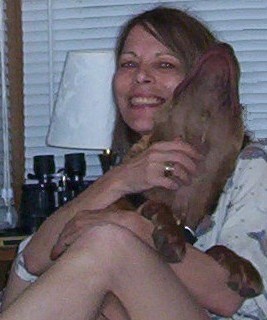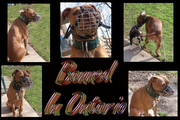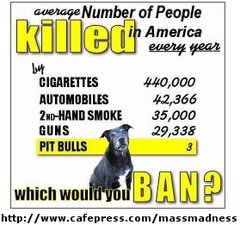Profoundly ignorant of justice system, discredited pathologist admits
This article speaks for itself, but I' would have titled it as, 'Blind (lieing) Justice'.
'Profoundly ignorant' of justice system, discredited pathologist admits
TORONTO - A once renowned pathologist whose child death investigations helped put innocent parents behind bars answered to his tarnished legacy Monday, taking "full responsibility" for his flawed work but also lashing out at a profession he says left him poorly trained and "profoundly ignorant" of the criminal justice system.
In quiet, measured tones, a bespectacled Dr. Charles Smith submitted to a public inquiry probing 20 cases of his cases that have been called into question by a panel of experts.
His first day of testimony came complete with apologies for many of those affected by his work - some of whom were sitting just metres away from Smith in the spectator's gallery - and insights into what drove the man once considered the dean of his profession.
"In the very beginning, when I went to court on the few occasion in the 1980s, I honestly believed it was my role to support the Crown attorney," Smith told the inquiry.
"I was there to make a case look good. That's the way I felt."
Smith testified that it took him years to learn that his proper role wasn't to support the prosecution but to be "much more impartial."
"I thought I knew (my role) but I realize now just how profoundly ignorant I was."
The now-disgraced pathologist laid the blame for that ignorance on forensic pathology training and practice in the 1970s and 80s that he said was a far cry from what it ought to have been.
"It was self-taught, it was minimal, and retrospectively I realize it was woefully inadequate," he said.
At the outset of his testimony, Smith said he has "come to appreciate mistakes that I made and I am sorry for them."
"I also recognize that at times my conduct was not professional and I deeply regret that."
Among those whose lives were torn apart by those mistakes are several mothers who were jailed for years until the cases against them fell apart, and a man who was finally exonerated after spending more than a decade in prison for the death of his niece.
Another couple, convicted of murdering their son, have had their convictions quashed and face new trials ordered by the Supreme Court of Canada.
When asked by lead commission counsel if he was too emotionally attached to some of his cases, Smith replied: "Now that I think back on it, I would have opened the door on that possibility a crack."
Emotional attachment, Smith added, is one of the pitfalls of the pediatric forensic profession.
In 2005, Smith was quoted in a newspaper report as saying he "had a thing" against people who hurt children.
"That's not a good statement, but I think in my heart of hearts that's how I feel," Smith told the inquiry.
"It looks like I'm biased in my approach. . . an advocate against some family member, so I'm a little bit embarrassed (by that comment)."
As his lawyer took him case-by-case through his questionable conclusions, Smith admitted making errors while, in many cases, defending his findings as being consistent with medical knowledge that was available at the time.
Smith conceded his testimony in several cases was too "adversarial" and too often took a "black and white" approach to presenting pathology evidence that was not clear-cut.
He apologized directly to several of the people who were either wrongfully accused or convicted.
"I did give an opinion and I testified in the court and therefore I believe I contributed to a miscarriage of justice," Smith said of the case of William Mullins-Johnson, who spent more than a decade in prison after he was convicted in the death of his four-year-old niece.
"I'm sorry and I do apologize," he said, a refrain he repeated many times as each case was examined for the inquiry.
Mullins-Johnson said he didn't put much stock in Smith's words.
"It doesn't make much difference to my life," he said outside the inquiry. "I knew I did nothing to my niece and deep down, at the time, they even knew. The damage is done."
Sherry Sherret, convicted of infanticide in the 1996 death of her four-year-old son, largely on the strength of Smith's conclusions, said she had mixed feelings about whether Smith should face criminal sanctions for his actions.
"I've struggled to answer that. Yes and no. Just because he doesn't know what it's like to be locked up. ... You get called names, your life is threatened when you're away, and nothing can ever change that," she said.
"So maybe a little of that for him to feel. But in the long run, it's not 100 per cent his fault because obviously somebody wasn't watching him."
Sherret, of Belleville, Ont., was handed a one-year jail term of which she served eight months.
Her case is now before the Ontario Court of Appeal.
In the case of Brenda Waudby of Peterborough, Ont., her 21-month-old daughter was found dead in 1997 with a pubic hair in her groin area. Smith later testified that he knew nothing about a hair. Five years after murder charges against Waudby had been withdrawn, he found the hair in his desk drawer.
Ultimately, the child's babysitter admitted to killing the child.
"My handling of the hair was not what it should have been," Smith testified Monday.
"I'm sorry for that. I realize that those actions were not helpful. I realize that they served only to perhaps confuse the investigation."
Smith agreed that, in the mid-1980s, there was a concern that child abuse was under-reported, often missed by health professionals and not prosecuted often enough.
"Child abuse issues were only becoming public (then)," Smith said, adding there was an advocacy culture surrounding such issues.
"It was almost wanting to educate, bring attention to this."
Despite his contrition, Smith told the inquiry he felt a coroner's review of his cases was unfair because it didn't examine the work of other pathologists, or even the police.
"I was unfairly singled out," Smith said.
The reviewing experts also had access to medical records and witness statements that he didn't have at the time, and failed to take into account how the science of pathology has evolved since he worked on those cases, he added.
Smith laid out his evidence in a 120-page document filed with the inquiry that details his education and experience as a pathologist. The statement also lays out in detail his work in the 20 cases in which experts questioned his conclusions.
In the statement, Smith disputes the "characterization" that he made "significant" errors in those cases.
The review of his work by the coroner's office "stressed that the concerns raised by the reviewers in the 20 cases 'ranged from relatively minor to potentially more serious issues,' " the statement reads.
"Dr. Smith believes that the testimony to date supports the original characterization and faults the (coroner's office) ... for allowing this misperception to continue."
Discredited pathologist Dr. Charles Smith began a week's worth of testimony Monday at a public inquiry into pediatric forensic pathology that's probing some of his work.
Some quotes:
"I think I was unfairly singled out." - Smith on the review of 45 cases he handled.
"I'm not by talent or gift a leader. I'm certainly not an organized person and I think more could have been done." - Smith on his role in the "disconnect" between the Office of the Chief Coroner, chief forensic pathologist and the forensic pathology unit at Toronto's Hospital for Sick Children.
"I think that's grossly erroneous." - Smith on being characterized in the media as a person who saw abuse in every child death.
"I'm deeply contrite." - Smith on charges against two people in the death of three-month-old Athena being thrown out because of excessive delay.
"I have no one to blame but myself. I think that is an expression of my disorganization and untidiness and perhaps also an expression of the fact that I wasn't fully attuned to the importance or the procedures related to things like continuity of evidence." - Smith on failing to keep track of evidence from cases he worked on.
"I believe I was too defensive or dogmatic or adversarial. And I was certainly too concrete. I don't believe that I clearly communicated my own uncertainty, but rather I think I communicated the certainty of others. I confess, I think I was misguided in what I was doing." - Smith on his testimony at a preliminary inquiry in the case of Louise Reynolds, charged in 1997 with killing her seven-year-old daughter, Sharon. Subsequent experts concluded the girl's wounds were consistent with dog bites.
"I realize that my mistakes, my diagnostic error in my testimony in court were not helpful. I recognize that created problems for the investigators and for the judicial system. And more importantly, for Sharon's mom, and for that, I am truly sorry." - Smith on his work in the Reynolds case.
"Though I did not do the first autopsy on Valin, I did give an opinion and I testified in court, and therefore, I believe I contributed to a miscarriage of justice. And to whatever degree the jury may have considered my opinion in their decision, I'm sorry and I do apologize to Mr. Mullins." - Smith on his conduct in the Valin case, which resulted in William Mullins-Johnson spending 12 years in jail for sodomizing and killing his niece.
"I believed at the time it was true. ... I believe that I heard what I wanted to hear, as opposed to what he actually said." - Smith on alleging Justice Patrick Dunn told him that a 12-year-old babysitter acquitted of killing a child in her care was in fact guilty.
"He made an attack on my life. He put me in an environment where I could have been killed any day - any day - based on lies. So I don't hold much stock in apologies from him." - William Mullins-Johnson, speaking outside the hearing, on Smith's apology.
"I've struggled to answer that. Yes and no. Just because he doesn't know what it's like to be locked up. ... You get called names, your life is threatened when you're away, and nothing can ever change that. So maybe a little of that for him to feel. But in the long run, it's not 100 per cent his fault because obviously somebody wasn't watching him." - Sherry Sherret, convicted of infanticide in the 1996 death of her four-year-old son, about whether she wants to see Smith punished.
Some prominent criminal cases in which pathologist Dr. Charles Smith played a key role:
Some prominent criminal cases in which pathologist Dr. Charles Smith played a key role that have been examined by the public inquiry into pediatric forensic pathology:
William Mullins-Johnson: Convicted of first-degree murder of niece Valin, 4, in 1993. Smith testified she was anally raped and suffocated. Conviction quashed after he spent 12 years in jail when other experts found no such evidence and concluded she died of natural causes.
Louise Reynolds: Charged with killing her daughter Sharon, 7, in 1997. Smith concluded she had been stabbed 80 times with a scissors. Charge withdrawn after other pathologists concluded the girl was mauled by a dog, although some experts don't believe all the wounds can be explained as dog bites.
Brenda Waudby: Peterborough, Ont., woman charged with beating daughter Jenna, 2, to death in 1997 on Smith's opinion about time of injuries. Second-degree murder charge dropped after other experts said injuries were inflicted on evening of death, when she was in the care of a 14-year-old boy, later convicted of manslaughter. Waudby maintains Smith kept a hair from the autopsy, found five years after the charges against her were withdrawn, in a drawer.
Lianne Thibeault: Investigated for manslaughter of 11-month-old son Nicholas in 1995, who bumped his head and stopped breathing. Smith concluded death was deliberate and had body exhumed. Another pathologist later decided death was an "unexplained" tragedy.
Maureen: Charged with killing Tyrell, 3, in 1998 after Smith provided an opinion on head injury. Tyrell's caregiver said the boy had banged his head on a table after jumping from a couch. Charge stayed on eve of trial in 2001 after three pathologists concluded injury likely caused by falling on a table.
Angela Veno and Anthony Kporwodu: Charged with killing Athena, 3 months, who sustained 35 rib fractures, a torn liver and bruises to the head. Ontario Court of Appeal threw out charges on grounds of excessive delay - Smith criticized for "inexplicable tardiness."
Marco and Anisa Trotta: Convicted of killing eight-month-old baby Paulo in 1993 after Smith testified about skull fracture. Supreme Court ordered new trial based on suspect pathology. He spent nine years in jail before winning bail; she served five-year term.
S.M.: A 12-year-old babysitter who was charged in the death of 16-month-old Amber of Timmins, Ont. Smith concluded the child had died in 1988 from brain injuries caused by severe shaking, although S.M. maintained Amber had fallen down a flight of stairs. S.M. was acquitted in 1991 by Justice Patrick Dunn, who issued a scathing criticism of Smith's work.






























